Today’s Current Affairs: 31st May 2024 for UPSC IAS exams, State PSC exams, SSC CGL, State SSC, RRB, Railways, Banking Exam & IBPS, etc
Table of Contents
Wet Bulb Temperature:

India is currently dealing with a very hot spell that is hurting many states, such as Delhi, Uttar Pradesh, Punjab, and Rajasthan. The combination of high temperatures and high humidity is having a big effect on daily life.
- Finding out how uncomfortable it is during a heatwave depends on how much humidity there is.
- Three types of temperatures are used to figure it out: dry bulb, wet bulb, and dew point.
- The way each one measures humidity is as follows:
- Temperature of the dry bulb – This is the average temperature of the air as measured by a monitor that has not been wet.
- Temperature of the wet bulb –This measures the coolest air that can get by evaporating water at a steady pressure. For measurement, a damp cloth is put around the thermometer bulb. Since evaporation cools the bulb, the number on the thermometer goes down. The wet bulb temperature is important for measuring humidity because it shows how much water the air can hold and helps us understand how evapotranspiration affects plants and people’s comfort.
- Temperature at the dew point – This tells you the temperature at which the air is completely saturated (100% humidity) and water vapor starts to turn into dew.
- Significance of Wet Bulb Temperature:
-
- Higher humidity lowers the cooling effect of evaporation because wet air stops more evaporation.
- So, if the temperatures of the wet bulb and the dry bulb are close to each other, it means that there is a lot of humidity.
- It’s more uncomfortable in hot weather when the difference is small.
Dengue Outbreaks Rise In Americas Due To Climate Change:
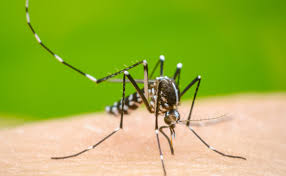
While dengue fever used to only happen in tropical areas, there are now an alarmingly high number of cases in both those areas and other places, like the US and Europe.
- This rise in dengue cases is a growing global health issue.
- It is thought to be caused by climate change and changes in how people travel around the world.
- Dengue fever is spreading very quickly in Latin America right now.
- One year after the previous year, the number of dengue cases in the area rose by 238% in just over four months in 2024.
- The Pan-American Health Organization reported 4.1 million cases last year, which is more than 400% more than the five-year normal.
- This area is especially at risk because the weather changes between hot, humid, and wet times, which are perfect for Aedes Aegypti mosquitoes, which are the main carrier of dengue.
- The weather, especially the El Niño Southern Oscillation (ENSO), plays a big part in causing dengue breakouts.
- ENSO causes a pattern of wet and dry periods that moves around the region, making it easier for mosquitoes to lay their eggs.
- Together, this and global warming are making outbreaks happen more often and with more force.
- Dengue attacks in North America used to happen less often, but now they happen every year.
- Mosquitoes can live and breed longer when it’s warmer all year, not just in the summer. When 400 people were hospitalized with dengue in March, Puerto Rico declared a dengue emergency.
- Cases are now being reported in Hawaii, Arizona, Florida, Texas, California, and even Washington, DC.
KAZA Summit Underway In Zambia:

The Kavango-Zambezi Trans-Frontier Conservation Area (KAZA TFCA) Summit took place in Livingstone, Zambia, in May 2023, and more than 400 people were there.
- Representatives from Angola, Botswana, Namibia, Zambia, and Zimbabwe met at this meeting for five days, from May 27 to May 31.
- The KAZA conservation area is made up of these countries.
- It is known for having a lot of wildlife, including the world’s largest population of elephants.
- The main goal of the KAZA TFCA meeting was to look at how far the conservation area has come since it was first set up and how it has grown.
- The Memorandum of Understanding made in 2006 and the KAZA Treaty of 2011 were looked at to see how well they were being put into action to protect biodiversity and boost the economy through nature-based tourism.
- Zimbabwe’s Director for Wildlife and Forestry Management talked about how the meeting wanted to make KAZA the best-managed conservation area in the world.
- The summit was planned to end with a high-level meeting of the presidents of the five countries, where they were supposed to reaffirm their support for the conservation effort.
- The main idea of the summit was to use the area’s natural and cultural resources to help everyone’s social and economic growth.
- This helped people make choices that would improve both conservation efforts and community benefits.
Golden Rice : Permit For commercial Production
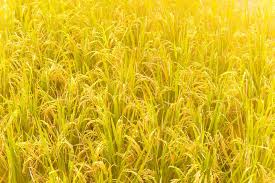
The Philippine Court of Appeals recently revoked biosafety permits for the commercial production of genetically modified golden rice and Bt eggplant. The court cited the government’s failure to establish safety monitoring mechanisms.
- Golden Rice (approved for commercial production in 2021) is genetically engineered to contain beta carotene, giving it a yellow-orange colour.
- Unlike ordinary rice, which does not have beta carotene in its grain, Golden Rice’s beta carotene is identical to that found in vegetables and fruits.
- It does not require special cultivation practices and has the same yield and taste as regular rice.
- This rice is a valuable tool in combating Vitamin A deficiency, which is crucial for growth, immune health, and vision.
World Menstrual Hygiene Day 2024:

On World Menstrual Hygiene Day 2024, India celebrates significant progress in menstrual hygiene management, with the 5th National Family Health Survey (NFHS 2019-2020) reporting that around 80% of young women aged 15-24 now use safe menstrual hygiene products.
- However, the needs of one of the most marginalized groups of women in Indian prisons remain overlooked.
- Societal biases deny these women basic rights and proper menstrual hygiene management, highlighting a critical area for further improvement.
- According to the National Crime Records Bureau, there are 23,772 women in Indian prisons, with 77% of them in the reproductive age group (18-50 years) and likely to be regular menstruators.
- The availability of sanitary napkins is inconsistent across prisons, and the quality of these products could be better.
- All prisons issue ‘one size’ sanitary pads, which do not cater to the varying needs of different women.
- Most prisons do not offer other types of menstrual products like tampons or menstrual cups.
- Despite the 2016 Model Prison Manual’s recommendations, many states have not provided female prisoners with adequate water and washroom facilities.
- Proper disposal of menstrual hygiene materials is often neglected, impacting both women’s health and the facility’s hygiene.
- Overcrowding and poor socio-economic conditions further hinder access to necessities like water, detergent, and soap
Dag Hammarskjold Medal : Naik Dhananjay Kumar Singh

Naik Dhananjay Kumar Singh will be honoured posthumously with the Dag Hammarskjold medal during a solemn ceremony when the UN commemorates the International Day of United Nations Peacekeepers.
- Dag Hammarskjold medal was established in 1997 and it is the highest honour awarded to UN peacekeepers.
- It is a posthumous award given to members of peacekeeping operations who lost their lives during service with a peacekeeping operation under the operational control and authority of the United Nations.
- Each year on Peacekeeper’s Day, this medal is awarded to any Member State who has lost one or more military or police peacekeepers at a ceremony at United Nation’s headquarters.
- It is named after the second Secretary-General of the United Nations, Dag Hammarskjold.
RudraM-II Missile:
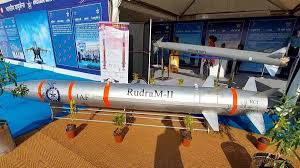
The Defence Research & Development Organisation (DRDO) successfully flight-tested the RudraM-II from Su-30 MK-I platform of the Indian Air Force (IAF) off the coast of Odisha
- RudraM-II Missile is an indigenously-developed solid-propelled air-launched missile system.
- It is meant for Air-to-Surface role to neutralise many types of enemy assets.
- It is designed to have a strike range of almost 350-km, from a Sukhoi-30MKI fighter of the IAF.
- It involves several state-of-the-art indigenous technologies developed by various DRDO laboratories that have been incorporated into the missile system.
- The DRDO is developing these as new-generation anti-radiation missiles (NGARMs) for destroying a variety of enemy surveillance, communication, radars and command and control centers on the ground.
- The 150-km range RudraM-I missile, with INS-GPS navigation with a passive homing head for the final attack, was first tested in Oct 2020.
- The missiles are meant for suppression of enemy air defences (SEAD) from long stand-off ranges, which in turn will enable IAF strike aircraft to carry out bombing missions without hindrance.
- Anti-radiation missile are designed to detect, track and neutralise the adversary’s radar, communication assets and other radio frequency sources, which are generally part of their air defence systems.
eMigrate Project:

A Memorandum of Understanding (MoU) is entered into between Ministry External Affairs (MEA), Ministry of Electronics and Information Technology (MeitY) and Common Service Centre
- eGovernance Services India Limited to create a synergy between Common Service Centre (CSC) SPV & MEA to provide the eMigrate services through CSCs in the country.
- eMigrate project is undertaken to assist mainly the blue-collar workers going to Emigration Check Required (ECR) countries.
- The project was conceptualized to address issues faced by the migrant workers by making emigration process online seamless and also to bring foreign employers and registered recruitment agents and insurance companies on one common platform aimed at promoting safe and legal migration.
- Under this MoU, eMigrate Portal of MEA would be integrated with CSC’s portal, to provide following eMigrate services to the citizens through CSCs
- Facilitate registration of applicants on eMigrate portal through CSCs.
- Facilitation of uploading and processing the required documents for the applicants on eMigrate portal through CSCs.
- Facilitate and supporting booking for medical and other services required by migrant workers or applicants registered on eMigrate portal through CSC.
- Creating awareness about eMigrate services amongst citizens across India.
New System To Identify Scam/Fraud Calls:

Department of Telecom (DoT) recently introduced a new tool to identify genuine calls from those made by fraudsters.
- The DoT has allocated a dedicated 10-digit numbering series starting with 160 for service and transactional calls made by the government, regulators, and financial entities.
- These 10-digit numbers will include additional information to help you recognize the caller.
- The 10-digit number series has been designed by the DoT in such a manner that citizens will get an idea about calling entities as well as the telecom operator and the place from where it has originated.
- This new system aims to give you more information about incoming calls, empowering you to identify potential scams.
- Incoming calls from banks, government departments to display 160 Prefix:
- The 10-digit number will have a 160 prefix and will be issued in 1600ABCXXX format for government, financial institutions, and telecom regulators.
- The AB will show the code of the telecom circle, like 11 for Delhi and 22 for Mumbai.
- While the digit at C place will show the code of the telecom operator.
- The XXX will be digits between 000-999.
- Numbers for financial institutions to be issued in 1601ABCXXX format:
- For financial entities regulated by the RBI, Securities and Exchange Board of India (SEBI), PFRDA (Pension Fund Regulatory and Development Authority), and Insurance Regulatory and Development Authority (IRDA), the 10-digit number will be issued in 1601ABCXXX format.
- Telecom service providers (TSPs) are responsible for verifying each entity requesting a 160 series number.
- They will also obtain a commitment that the number will only be used for legitimate service and transactional calls.
Insurance Regulatory And Development Authority Of India:
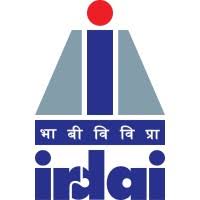
The Insurance Regulatory and Development Authority of India (IRDAI) recently made some major changes in the regulatory norms for health insurance policies.
- IRDAI is a statutory body formed under an Act of Parliament, i.e., the Insurance Regulatory and Development Authority Act, 1999 (IRDAI Act 1999), for the overall supervision and development of the insurance sector in India.
- Objectives is
- to protect the interests and fair treatment of the policyholder.
- to regulate the insurance industry in fairness and ensure the financial soundness of the industry.
- to regularly frame regulations to ensure the industry operates without any ambiguity.
- Head Office: Hyderabad
- It is responsible for registering and/or licensing insurance, reinsurance companies, and intermediariesaccording to the regulations.
- It sets the eligibility criteria, qualifications, and capital requirements for obtaining licenses in the insurance business.
- Composition: It is a 10-member body- a chairman, five full-time members, and four part-time members appointed by the Government of India.
Eurasian Whimbrel : Migratory Bird

For the first time, a long-distance migratory bird, the Eurasian or common whimbrel, tagged with a Global Positioning System (GPS) transmitter, was captured on camera in the state of Chhattisgarh.
- Eurasian Whimbrel is a wading bird in the large family Scolopacidae.
- Scientific Name: Numenius phaeopus
- They have an extensive range that spans across five continents: North America, South America, Asia, Africa, and Europe.
- They breed in the subarctic regions of Siberia and Alaska during the summer months before migrating south to wintering grounds in southern USA, Central America, South America, Africa, and South Asia, including Nepal.
- Habitat: Winters mainly along the coastline, coastal wetlands, mangroves, marshes, and larger rivers.
- Whimbrels are known for their high-pitched call consisting of a repetitive series of seven notes.
- Conservation Status: IUCN Red List: Least Concern
Indian Computer Emergency Response Team:
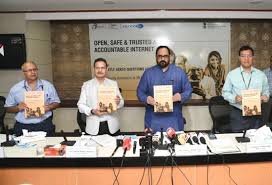
India’s Computer Emergency Response Team (CERT-In) recently issued a warning for a high-severity vulnerability reported in Google Chrome for desktops.
- CERT-In is the national nodal agency for responding to computer security incidents as and when they occur.
- It is a functional organisation of the Ministry of Electronics and Information Technology, Government of India, with the objective of securing Indian cyberspace.
- CERT-In has been operational since January 2004.
- The constituency of CERT-In is the Indian cyber community and Indian cyberspace.
- The Information Technology (Amendment) Act 2008, designated CERT-In to serve as the national agency to perform the following functions in the area of cybersecurity:
- Collection, analysis and dissemination of information on cyber incidents.
- Forecasts and alerts of cyber security incidents
- Emergency measures for handling cyber security incidents
- Coordination of cyber incident response activities.
- Issue guidelines, advisories, vulnerability notes, and whitepapers relating to information security practices, procedures, prevention, response, and reporting of cyber incidents.
- CERT-In provides services to organizations in the Government, Public, and Private sectors. In addition, CERT-In provides services to individuals and home users as well.
- Disclosure of information will be followed in accordance with Indian Constitutional laws.




